The best mountain bike saddle will save you discomfort on long rides, and minimise the risk of sores and pain.
Finding the best mountain bike saddle is no mean feat, with everyone having unique anatomy and differing riding styles.
This means there is no silver bullet for saddle shape and fit.
Best practice would be to try out differing saddles to see what works for you, but this option isn't accessible to everyone, so we have tested some of the best to help you navigate a competitive market.
We also have a best women's mountain bike saddle guide and best list.
You can skip to our mountain bike saddles buyer's guide for information on what to look for in a MTB saddle.
Best mountain bike saddles 2024
WTB Silverado Steel

- Weight: 306g
- Width: 135, 142mm
- Length: 280mm
- Gender: Unisex
- Price: £40/$48/€46/AU$70 as tested
WTB’s Silverado saddle feels well-made, despite its reasonable price, with a slightly textured upper for grip, tough bumpers on the edges and a base that flexes more in some areas than others.
The padding is thin but, combined with cut-outs in the shell, supportive and comfortable. A flat side-to-side profile spreads your weight well, while a slightly hammocked fore-aft shape keeps you stable.
There’s plenty of room to move around, and the deep wings are comfortable when clamping the saddle with your thighs.
We noted the Silverado isn't particularly light and the pressure-relief channel isn’t particularly deep.
Ergon SM Enduro Men

- Weight: 284g
- Width: 135, 148mm
- Length: 266mm
- Gender: Men
- Price: £75/$90/€85/AU$131 as tested
This saddle’s flat side-to-side profile ensures weight is held by your sit bones, rather than the softer tissue of your perineum, giving good comfort on long spins.
The nose doesn’t feel too long, and the edges of the wings are well-padded, which is good for your thighs.
Not only is the pressure-relief channel effective, but it has a drain hole, so water doesn’t pool there during wet rides. Two widths are available to suit different body shapes.
The SM Enduro is relatively heavy and, in the wet, we found the cover material a touch slippery under our shorts.
Fizik Terra Alpaca X5
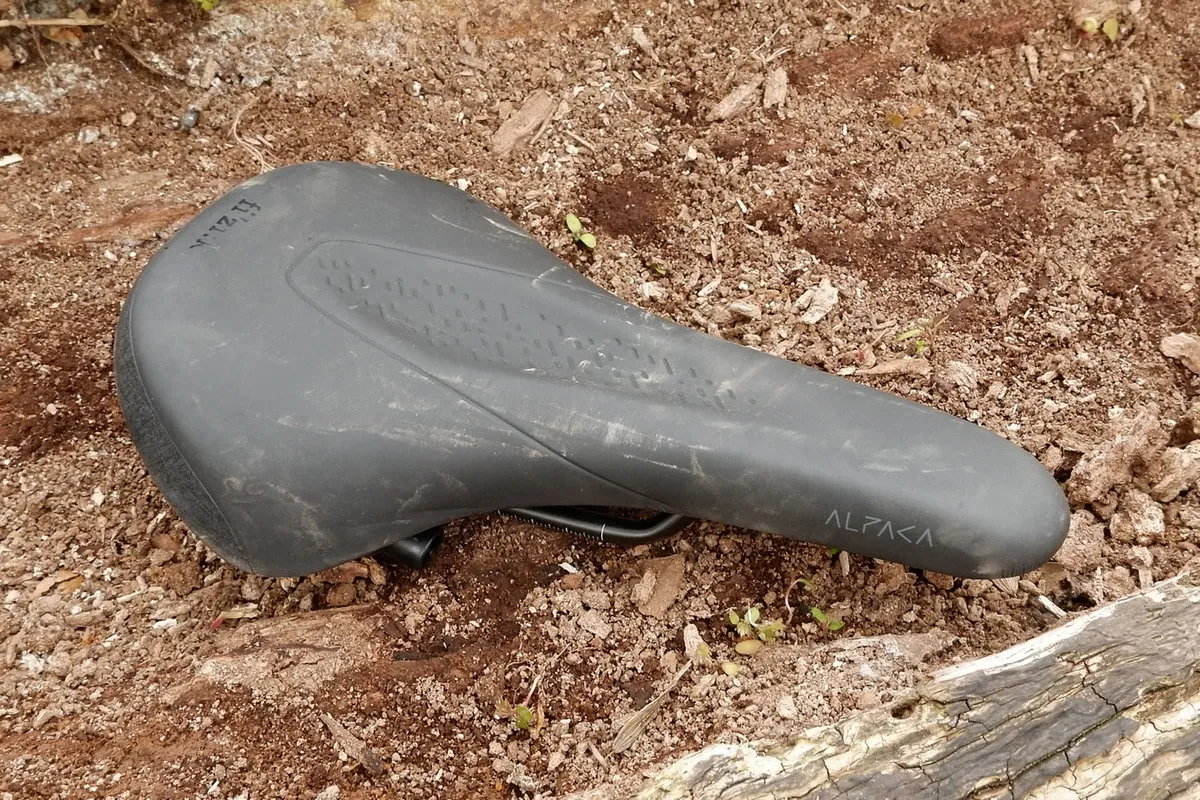
- Weight: 234g
- Width: 145mm
- Length: 248mm
- Gender: Unisex
- Price: £90/$110/€89 as tested
The Alpaca's broad rear gives plenty of real-estate to perch on and the flat side-to-side profile is comfortable. There’s a hint of tail rise to keep you in place during harder efforts.
The pressure-relief channel isn’t the deepest or longest, but is effective even on long rides. We found the short, broad nose decent to sit on while ascending steep slopes.
A neat multi-tool can be bolted to the rear of the saddle (£30 if bought together).
The Terra Alpaca X5 is the lightest seat on this list, although it only comes in one width.
We also found the lower rim of the saddle to be fairly hard and the cover can be a little slippery when wet.
SDG Bel-Air V3 Steel
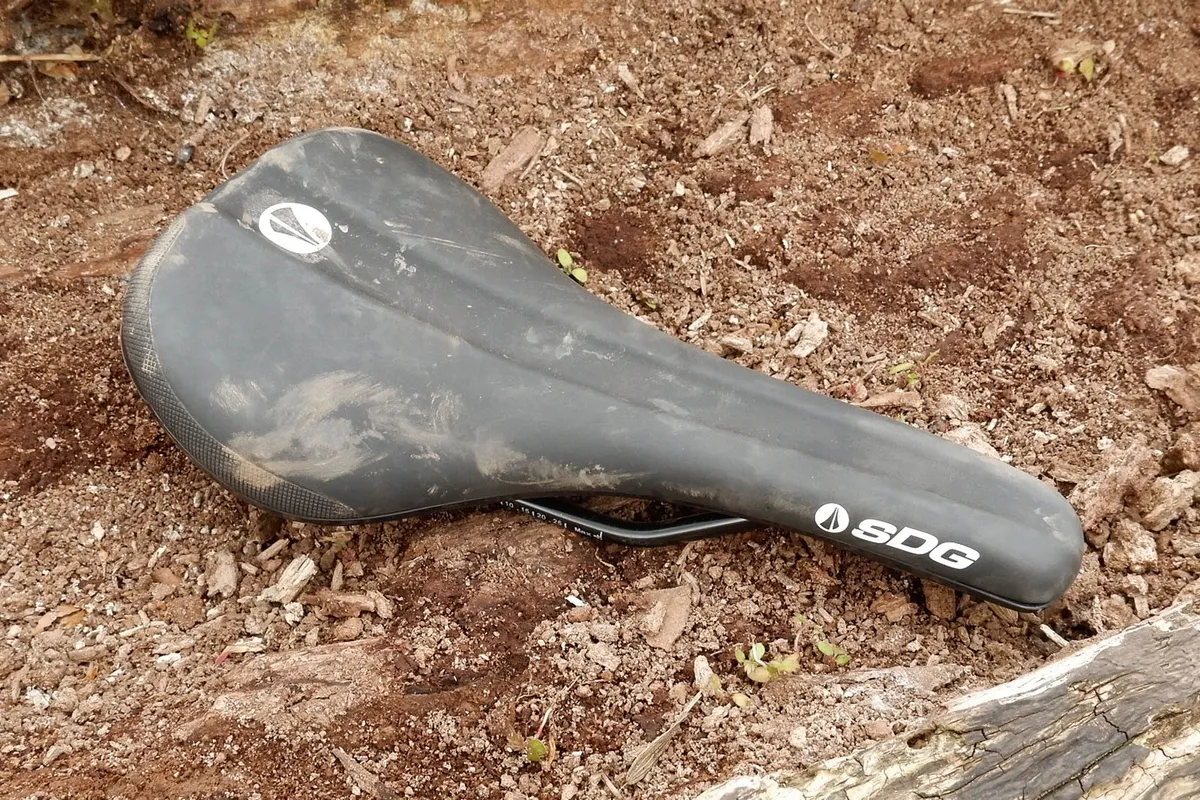
- Weight: 319g
- Width: 140mm
- Length: 260mm
- Gender: Unisex
- Price: £45/$60/€55/AU$93 as tested
An upturn at the rear of the Bel-Air V3 prevents you from slipping when pushing hard and contributes to a hammock-style front-to-rear profile, which makes it feel as though you’re sitting ‘in’ the saddle rather than on it.
This can add a bit of pressure on long climbs; we tilted the nose down to compensate.
The pressure-relief channel is effective, aided by a cut-out in the shell. While the padding isn’t as firm as some, it blends comfort with support, even on long rides.
The wings feel good to grip with your thighs and are reinforced with Kevlar for durability.
The Bel-Air V3 is quite heavy compared to similar saddles.
WTB Volt
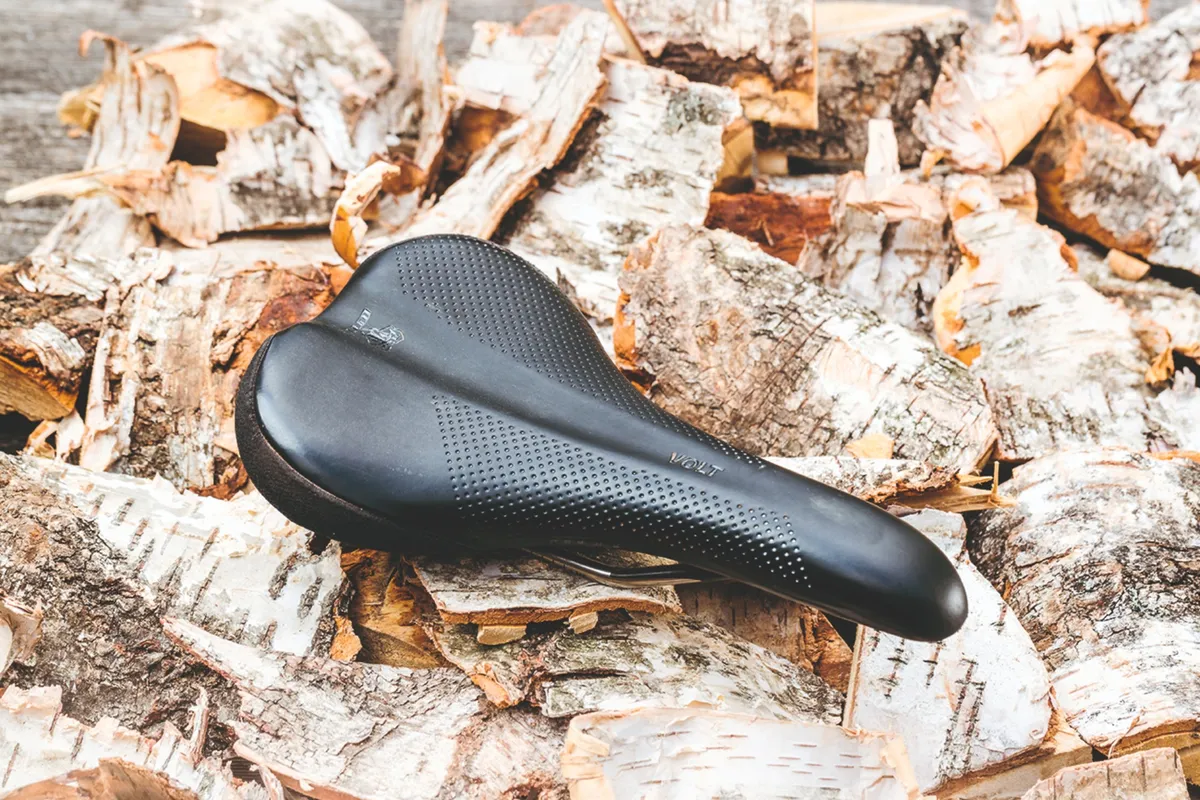
- Weight: 230g
- Widths: 142, 145, 150mm
- Length: 265mm
- Gender: Unisex
- Price: £109.99/$142.95 as tested
The Volt has a slightly curved profile, with a dropped nose and a rise towards the rear, complemented by medium-thickness padding.
There’s a shallow groove down the centre with a hull cut out beneath, plus dimples across the top and anti-abrasion panels on the back. This Ti-railed model weighs an impressive 230g.
WTB uses a clever online fit tool to predict the most suitable width – 150mm for us.
We found the Volt one of the comfiest saddles on this list, although it's a little tricky to keep clean, with dirt becoming ingrained in the rear panels and dimples.
With prices starting from £29.99 (steel rails), it’s easy to see why the Volt is so popular.
Also consider...
These saddles scored fewer than four stars out of five so we haven't included them in our main list, but they are still worth considering.
Syncros Belcarra R 1.5

- Weight: 241g
- Width: 130mm
- Length: 250mm
- Gender: Unisex
- Price: £110/$100 as tested
The flat side-to-side profile of the Belcarra R1.5 is comfortable and the broad, mid-length nose provides something to perch on or lean into.
Its narrow width won't suit everyone and there's no upturn at the rear, which means you have to rely on the narrow wings to hold you in place during hard, uphill efforts.
A carbon-fibre-infused shell and titanium rails help keep weight down. Padded, slightly flexible wings aid comfort and control.
Prologo Kappa Space T2.0
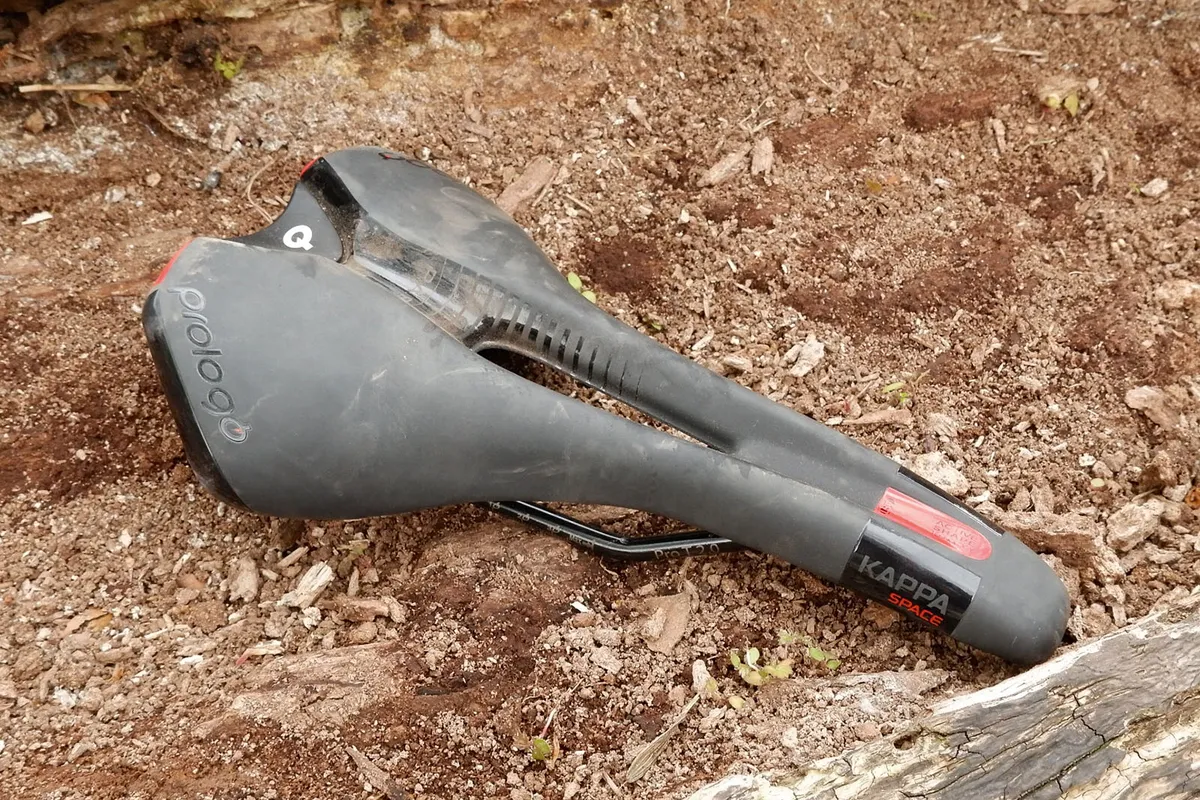
- Weight: 276g
- Width: 147mm
- Length: 273mm
- Gender: Unisex
- Price: £69/$79/€77 as tested
The Kappa Space T2.0 provides high levels of support, with the rear featuring firm padding that decreases in density towards the nose.
A deep central channel with a cut-out in the middle reduces pressure on your delicate bits and the rear of the saddle is broad, offering a wide pad on which to sit.
Our tester found the curved side-to-side profile put more pressure on their perineum than other designs we've tried.
The angular ‘wings’ aren’t the most comfortable to grip with your thighs on technical terrain and the edges of the channel are quite pronounced, while the cut-out lets a lot of spray through.
Mountain bike saddles buyer's guide

Mountain bike saddles come in various shapes and sizes depending on the type of riding you do and the shape of your behind.
Like all the contact points you have with your bike, your choice of saddle will come down to personal preference.
Below, we outline the criteria to consider to help you find the best mountain bike saddle for you.
Mountain bike saddle fit
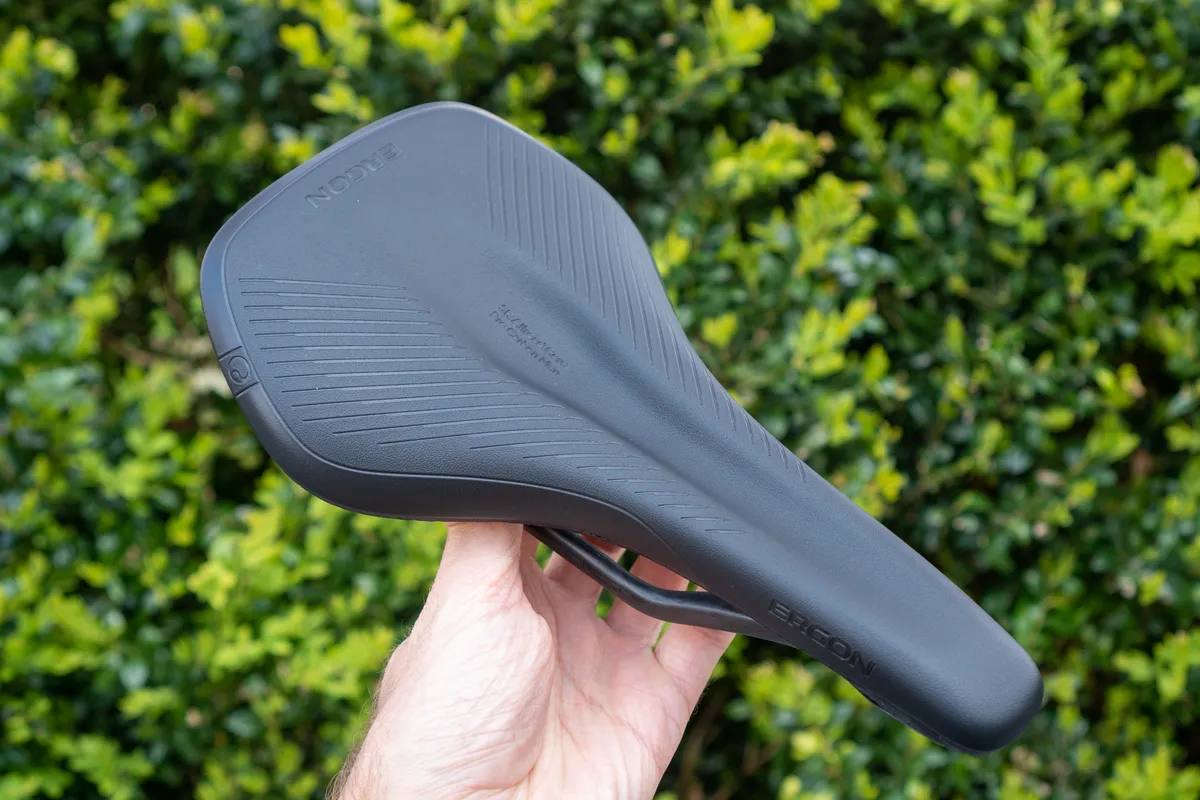
When choosing a mountain bike saddle, there is a generally accepted notion that optimum comfort is achieved by putting pressure through your sit bones and away from soft tissue.
The issue with buying any saddle is you rarely know if it will be a good fit without riding on it. As a result, many manufacturers offer test saddles that you can use to try out different shapes at participating cycle shops.
A professional bike fit can also be helpful in finding the right fit, with many bike fitters having an array of saddles to choose from and some even having equipment to measure your sit bones.
Width is the main measurement that will determine if you sit on your sit bones or not. Short-nose saddles are thought to keep you fixed in a single position on your sit bones.
Saddles for mountain biking will usually feature a concave shape, rising slightly at the rear for back support and to keep you from slipping off the back when climbing steep trails.
They usually feature sides that taper downward to increase the clearance between the saddle’s edge and your thigh to minimise the chance of chafing.
Mountain bike saddles are also less static these days thanks to the wide adoption of dropper posts. Because they are out of the way on the descents, most trail and enduro saddles are now more climbing-oriented.
How much padding should a mountain bike saddle have?
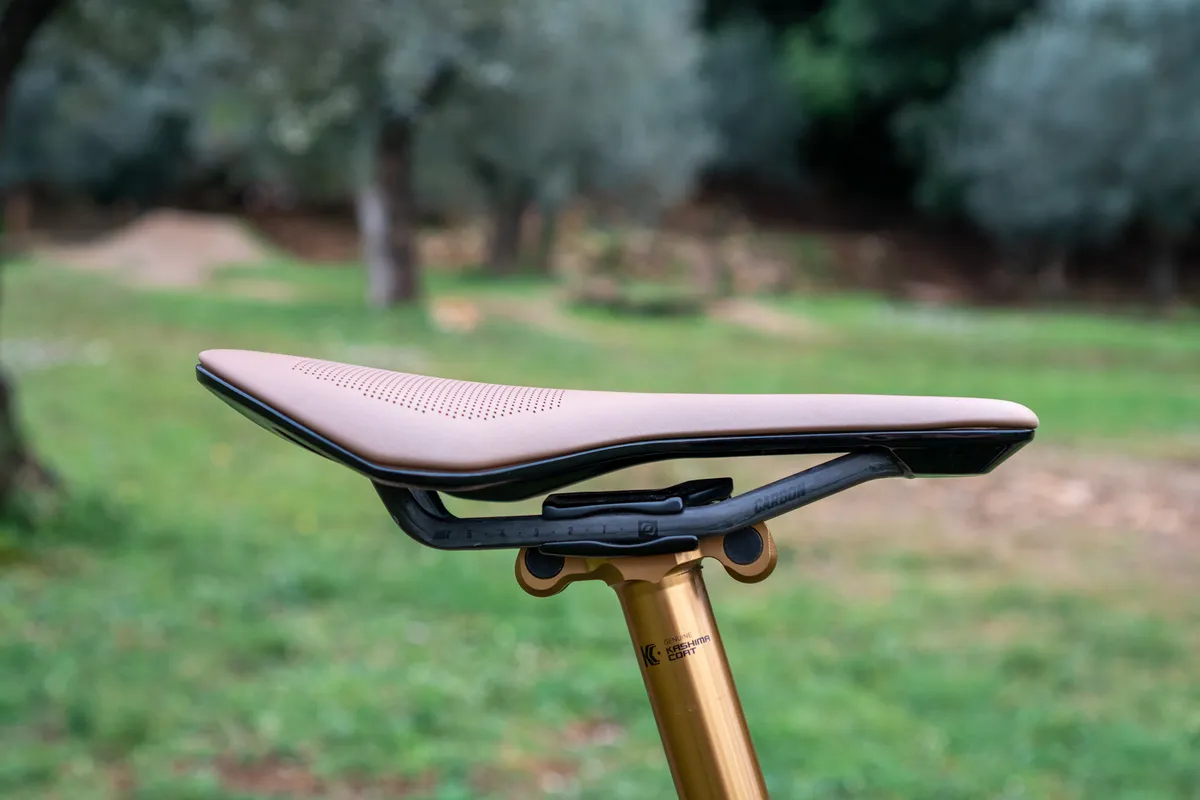
While it seems logical that more padding should lead to more comfort, it’s often not the case.
Too much padding can lead to chafing because there is more material blocking your movement, while thick padding on the sit bones can lead to your weight being forced toward the front of the saddle.
The shape is more important than padding, hence why full-carbon saddles can be comfortable even with a solid exterior.
The shape of the saddle usually aids compliance, with many brands building flex into their designs to avoid bulky padding.
Rail material can also add comfort, with hollow tubes reducing weight and adding compliance.
Many riders will opt for some form of padding, though it's not uncommon to see downhill riders using saddles with little to none, because they only sit on the saddle when waiting in lift queues.
Robustness and strength
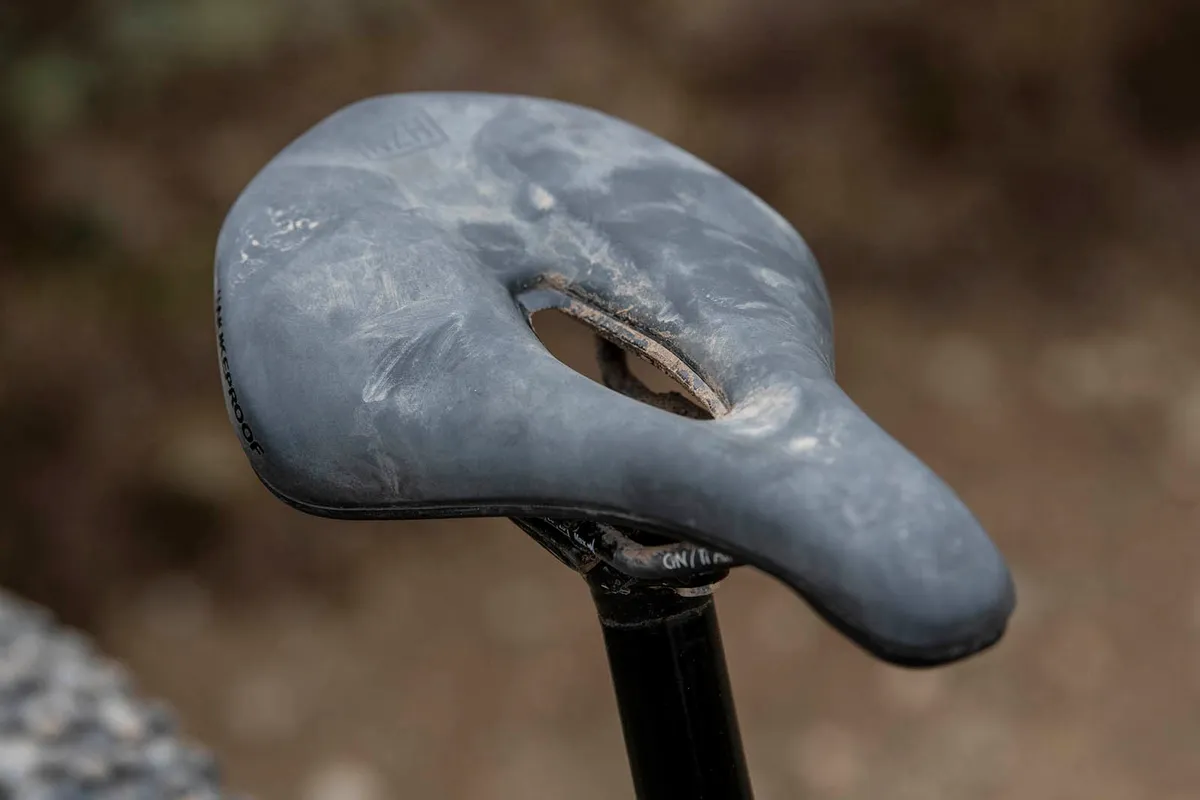
Saddles are essentially made up of four parts: the rails, shell, padding and cover, all of which have to be built to withstand the rigours of mountain biking.
While no component is completely crash-proof, good saddles will feature durable covers to fend off scratches and strong metal rails to cope with impacts from you, and from the ground.
Some cross-country riders trade robustness for lightness. Many choose a carbon road bike saddle to complement the stretched-out riding position of the best cross-country mountain bikes.
Should I buy a saddle with a relief channel?
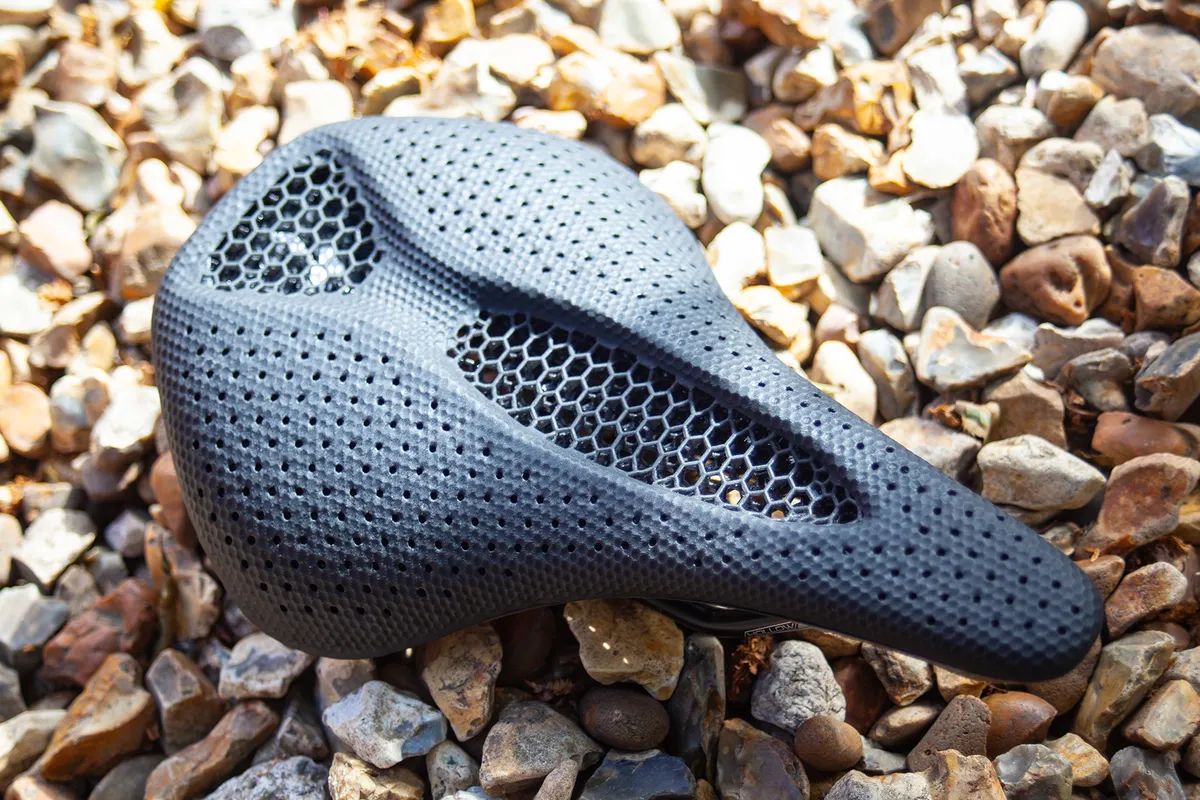
Some mountain bike seats feature relief channels or cut-outs in the centre of the saddle, though some may run through the entirety of the saddle.
Relief channels and cut-outs are designed to reduce pressure build-up on your perineum, which can be a common cause of discomfort when riding.
The design minimises the chances of groin pain because it allows you to tilt your pelvis forward and open your hip angle more.
What’s the difference between mountain bike saddles and road bike saddles?
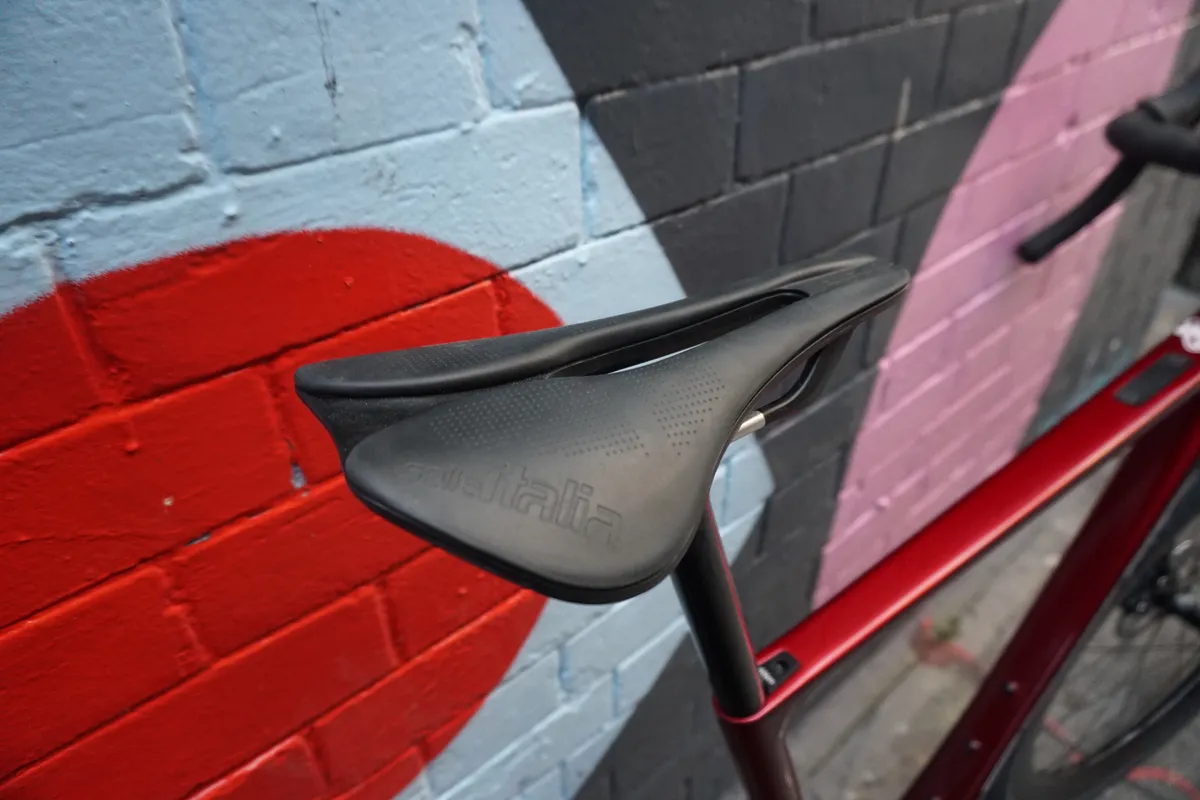
The main difference between mountain bike saddles and road bike saddles is their shapes are tailored to the riding positions of the different disciplines.
Road bike saddles tend to be flatter than mountain bike saddles to suit the lower, more aerodynamic position road riders assume.
Mountain bike saddles typically have more curvature than road saddles to help support the back.
Mountain bike saddles usually weigh more than road saddles too, with the need for greater durability resulting in more substantial designs, utilising heavier materials.
